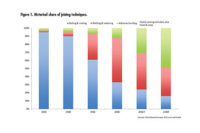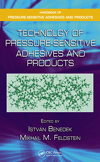Market Trends
Redefining the Future of the Transportation Sector with Adhesives and Sealants
Traction for adhesives and sealants among manufacturers of cars, buses, trucks, and recreational vehicles has surged in the past several years.




Ushering growth in the 2020s, legacy players in the adhesives and sealants market are striving to cater to the demands of transportation companies. Traction for adhesives and sealants among manufacturers of cars, buses, trucks, and caravans/recreational vehicles (RVs) has surged in the past several years.
Of late, the manufacturing of window sealants, trim adhesives, body panel adhesives, roof liner adhesives, and drone-reducing sealants has gained an uptick. OEMs are looking to streamline automotive design by reducing weight while boosting performance and sustainability.
Acrylic Adhesives in the Driver’s Seat
The viscosity of acrylic adhesives has set the trend, as they enable seamless dispensing and maintain a non-sag characteristic. Acrylic adhesives are used in the transportation sector for floor panel bonding, composite cab assembly, frame assembly, roof bonding, and exterior panel bonding. In addition, acrylic adhesives are used with a range of accelerators that can have an influence on viscosity, mix ratio, application method, and color change.
At a time when leading companies are trying to surmount the challenges of shelf life, production speed, strength, and odor, OEMs will potentially infuse funds in acrylic adhesives. To put things in perspective, acrylic adhesives can bolster productivity and throughput while enhancing impact resistance, thereby making products more durable.
Similarly, pressure-sensitive adhesives (PSAs) have fueled the trend, for they need no activation by solvent, water, or heat to provide a strong holding force in metal and plastics. With their elasticity and cohesion holding power, PSAs will cater to the demands of the transportation sector as a joining and fastening solution to streamline adhesive technology.
Epoxy Adhesives Expand Footprint
Industry dynamics suggest an increased penetration of epoxy adhesives in cars and trucks on the heels of their innate ability to comply with a slew of materials, as well as their resistance to chemicals and their high strength. Epoxy adhesives also provide high temperature and high fatigue resistance and are gaining traction in the transportation industry in light of their durability and optimal performance.
Investment in epoxy resin-based adhesives is likely to be more noticeable in the next few years, given that they can be easily modified and contain aromatic rings that boost chemical resistance. More importantly, epoxies have low shrinkage with a low degree of internal stress. It is pertinent to mention that epoxy adhesives are prevalently used as either one- or two-component products, and they boost adhesion to metals, have high strength, and exhibit tremendous hostile chemical and environmental resistance.
Two-component epoxy adhesives have become a natural fit for bonding and are highly stable due to their innate ability to resist a relentless weight and withstand chemical or physical influences. As such, two-component epoxy systems are highly desirable among automakers for coating, bonding, sealing, and encapsulation. Formulations such as those that are fast curing, flame retardant, high temperature resistant, and cryogenically serviceable have been instrumental in fueling the penetration of epoxy adhesives in the auto industry.
Automotive OEMs Cash In
With demand for high-performance cars featuring lightweight composite materials soaring, the use of adhesives and sealants in the automotive sector has become more pronounced in recent years. Notably, the automotive industry will be counting on structural adhesives that enable different types of materials to be attached seamlessly.
Traction for adhesives such as potting and sealing electrical components and switches is likely to be noticeable in the next five years as well. It is pertinent to mention that smart adhesives will remain instrumental in automotive headliners that are invaluable in LED lighting to provide vibration damping. Applications involving materials such as fabrics, plastics, composites, and electrical components make the role of adhesives even more demanding.
Considering the demand for high-performing, safe, fast, and efficient adhesives in the automotive industry, prominent companies are manufacturing adhesive products based on ethylene vinyl acetates (EVAs), polyamides, and polyolefins. These solutions provide good adhesive cost per part, have tremendous plasticizer resistance, and provide good adhesion to a range of substrates.
The use of sealants as a protection or barrier to prevent dust, dirt, chemicals, and moisture or to contain liquid or gas has mustered up the confidence of stakeholders in the adhesives and sealants markets. The popularity of sealants to protect surfaces has accentuated adhesives and sealants, while sealants are also believed to reduce vibration and noise, perform a joining function, and enhance performance.
Leading manufacturers are developing products that deliver improved resistance to shock, vibration, and harsh chemicals. At a time when automakers are demanding the production of higher performance and better products that can bond different materials, adhesives and sealants market share is slated to gain an uptick in the ensuing period. Automakers will exhibit an inclination toward adhesives and sealants for under-the-hood applications, interior applications, and exterior applications.
Increasing penetration of adhesives and sealants in the transportation sector is also associated with expanding demand for fuel efficiency through vehicle weight reduction. In a bid to comply with the Safer Affordable Fuel-Efficient (SAFE) Vehicle Rule put forth by the National Highway Traffic Safety Administration (NHTSA) and the Environmental Protection Agency (EPA), OEMs have increased their investments in using lightweight materials, including aluminums and high-strength steel. Considering the impressive demand for high-performance cars, automotive adhesives have gained ground with lightweight composite materials to reduce the weight of the vehicle. Automotive adhesives are also sought after in sealing heat exchanger tubes, gear boxes, bonding interior dashboards, sealing heat exchanger tubes, and bonding sensors.
Additional Opportunities
The use of adhesives in cars, bus assemblies, trucks, aircraft, gasket bonding, weatherstrip, and aerospace structural assemblies has become more pronounced in the past several years. Infusing funds in cutting-edge technologies, stakeholders in the adhesives and sealants market are creating smart adhesive solutions that can redefine the future of transportation assembly.
Stakeholders are vying to bolster their value chain proposition and envisage aerospace adhesives solutions as a lucrative portfolio. Demand for torsional stiffness, elasticity, environmental and temperature resistance, minimal surface preparation, and adhesion to different materials has become more noticeable in past several years. In particular, fire-retardant adhesives have witnessed profound traction, prompting leading companies to bolster innovation in bonding technology and keeping up with the demand for flame, smoke, and toxicity needs.
At a time when OEMs are working to streamline fuel-efficient materials, adhesives will provide an asset-heavy balance sheet and be in line with lightweighting efforts and production flexibility. Adhesives and sealants will continue to be in the driver’s seat in the transportation sector in the coming years, and the industry’s projection looks bullish.
For more information, visit www.gminsights.com.
Looking for a reprint of this article?
From high-res PDFs to custom plaques, order your copy today!










